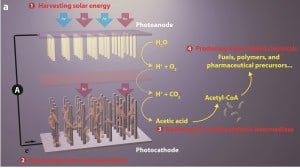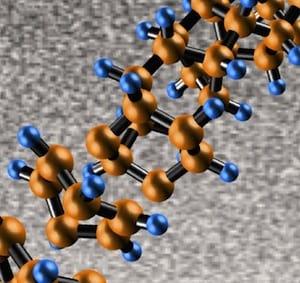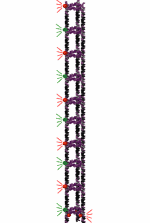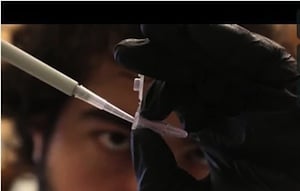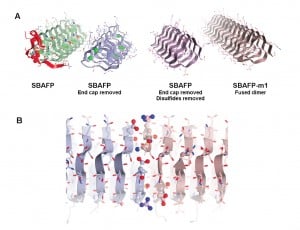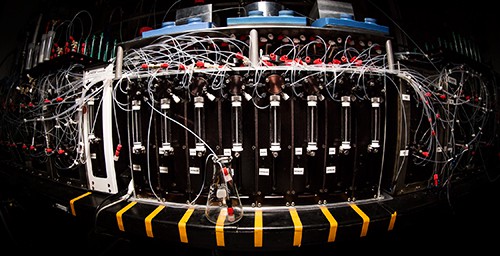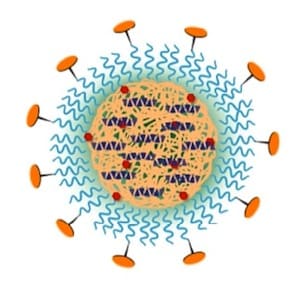A prototype system to produce chemicals and fuels from sequestered carbon dioxide, water, and sunlight uses semiconductor nanowires to produce electron-hole pairs, which are then used by two types of bacteria to produce oxygen and a variety of useful chemical products.
Nanowires and bacteria harnessed for artificial photosynthesis
